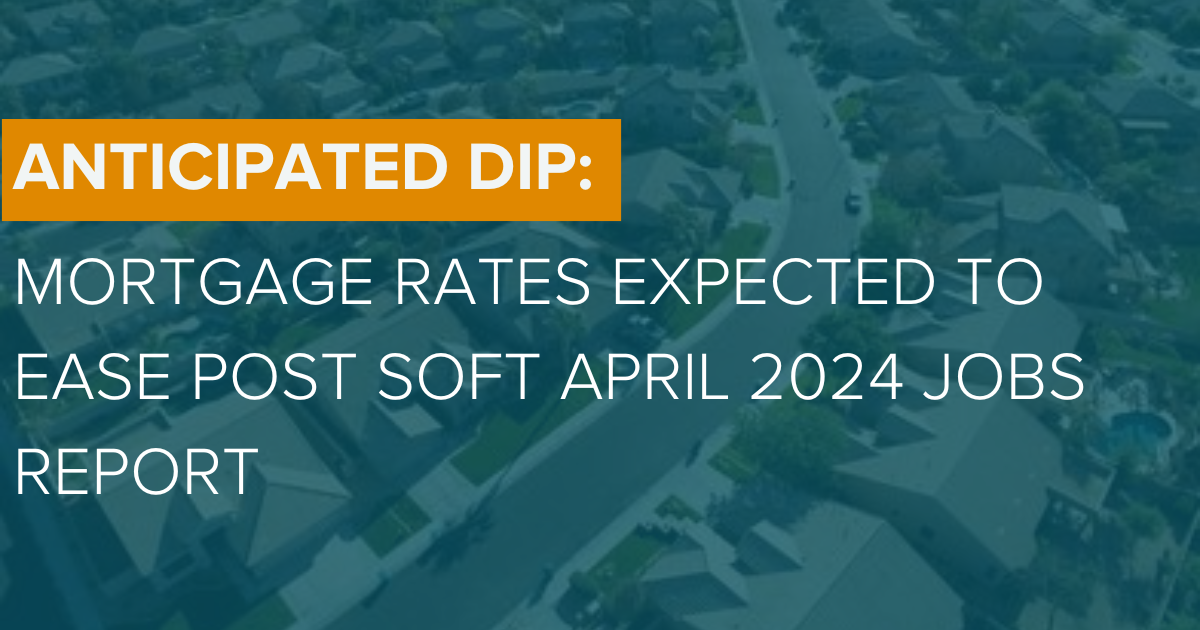Mortgage Rates Expected to Ease Post Soft April Jobs Report
May 3rd’s report brings significant implications for real estate investors suggesting a growing likelihood of interest rate cuts in 2024, following three months of economic challenges.
Over the past quarter, economists grew concerned about inflation remaining stubbornly high or, worse, picking up speed in part due to a labor market that’s still too hot.
This underscores the need for investors to stay vigilant and adapt their strategies accordingly, as fluctuations in interest rates can have a profound impact on borrowing costs and real estate investment opportunities.
Initially, expectations for rate cuts were high, with expectations of 5-6 cuts at the year’s outset which have since reduced to just 1-2 by mid-April 2024. Some even feared the Federal Reserve might opt for a rate hike.
However, May 3rd’s data provides a positive outlook for both investors and the Fed. As Federal Reserve Chairman Jerome Powell reiterated recently, unless there’s a rapid downturn in the job market, inflation trends will dictate their interest rate decisions.
May 3rd’s report suggests a potential easing of concerns about high inflation and hints at possible interest rate cuts. This is positive because it indicates a stabilizing economy and could lead to lower borrowing costs, stimulating demand in the housing market and creating better investment opportunities.
Long-term rates are dropping, and future markets indicate that investors are now slightly more optimistic about the possibility of a rate cut in September, or even as early as July 2024.
Homebuyers can expect a slight drop in mortgage rates, though significant relief hinges on improved inflation figures. Those nearing the end of the homebuying journey will enjoy some relief, but overall, rates remain notably high.
This news had a positive impact on the 5-Year Treasury rate, which directly influences DSCR rates in the private money lending space. For investors, this is crucial as lower mortgage rates can alleviate some of the lock-in creating an inventory shortage, opening up more opportunities in the market.
However, rates are likely to stay elevated until the Federal Reserve gathers sufficient economic data to confirm any reduction plans. Investors should closely monitor these economic indicators and adjust their strategies accordingly to navigate the private credit market effectively.
Investors can adjust their approach by taking advantage of lower interest rates for end-buyers. These lower rates might encourage more homeowners to sell, reducing the current inventory shortage.
As a result, investors could find more properties available to purchase and invest in. By aligning their strategies with these market changes, investors can identify new opportunities and potentially make more profitable investments.
Job growth in nonfarm sectors decreased to 175,000 from March’s 315,000, falling below the anticipated 240,000.
Additionally, the unemployment rate rose to 3.9% from March’s 3.8%, contrary to predictions of stability. Investors can benefit from this data to mitigate risks and capitalize on emerging opportunities in more stable areas of the market for the rest of 2024.
However, there’s little indication of an impending recession, given the robust state of the labor market. Despite a gain of 175,000 jobs, which signifies steady growth, especially when compared to the monthly average of approximately 250,000 jobs over recent months, the unemployment rate of 3.9% remains historically low.
The employment cost index showing a 1.2% quarter-on-quarter increase in Q1 2024, like figures from a year earlier, indicates stability and potential economic resilience.
This suggests that despite other challenges, such as slowing job growth, there are positive signs in the labor market that could support continued consumer spending and housing demand.
Concerns about triggering the Sahm rule, a historical predictor of recessions, only arise when the unemployment rate exceeds 4.2% for three consecutive months.
For investors, considering employment trends is pivotal in determining investment locations as it affects demand, population dynamics, and overall economic well-being.
Evaluating how employment rates influence housing markets and understanding the correlation between job growth and interest rates is essential for making well-informed investment decisions.







0 Comments